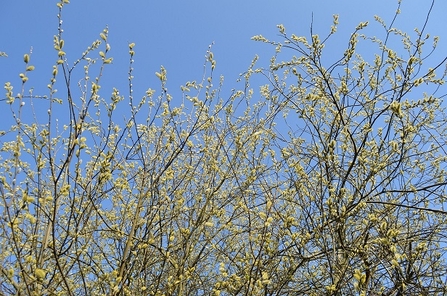
Sarah Gibson
There is a goat willow growing next to the boundary wall in my neighbour’s garden and I have been watching it every day. A week ago its buds were closed tight, wrapped in the sleek, silver fur that earns the tree its familiar name – pussy willow.
Sunshine has warmed the buds over the last few days and now the anthers of these male flowers stretch beyond the silky, grey hairs, turning the catkins primrose-yellow with pollen. A blue tit pecks at one, its belly the same colour, while its blue head is the same hue as the cloudless sky - useful camouflage if a sparrowhawk is around.
Barely a breath of wind stirs the branches and some early butterflies have settled on the catkins. Basking in the sun, their wings spread flat, angled for maximum warmth. In a single glance I see four tortoiseshells and a peacock. If I could hover over the tree, kestrel-like, I’m sure I would see many more.
A large bumblebee is feeding on the pollen. With thousands of individual catkins on a single tree, willow attracts hundreds of different insect species; wasps and flies as well as bees. Their larval young thrive on this protein-rich food. Willow comes in numerous species and hybrids that flower at different times, providing a bountiful food source over several months.
This willow almost certainly self-seeded, a truly wild tree in the midst of the town. And it is doing what wild vegetation does so well, nourishing the insects and birds that we delight in.
Sarah Gibson

